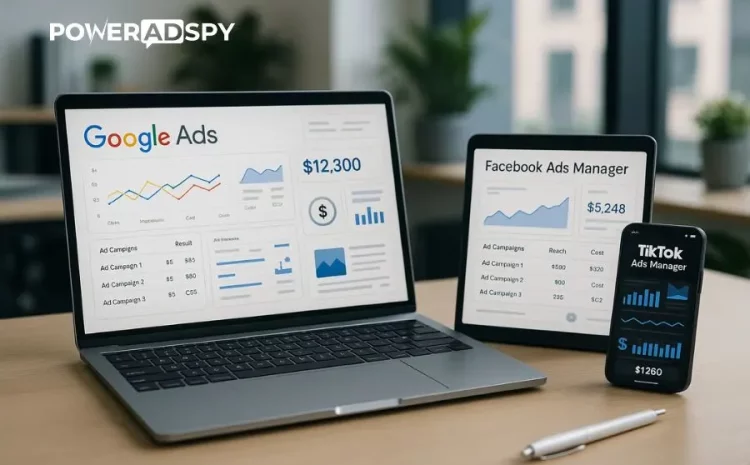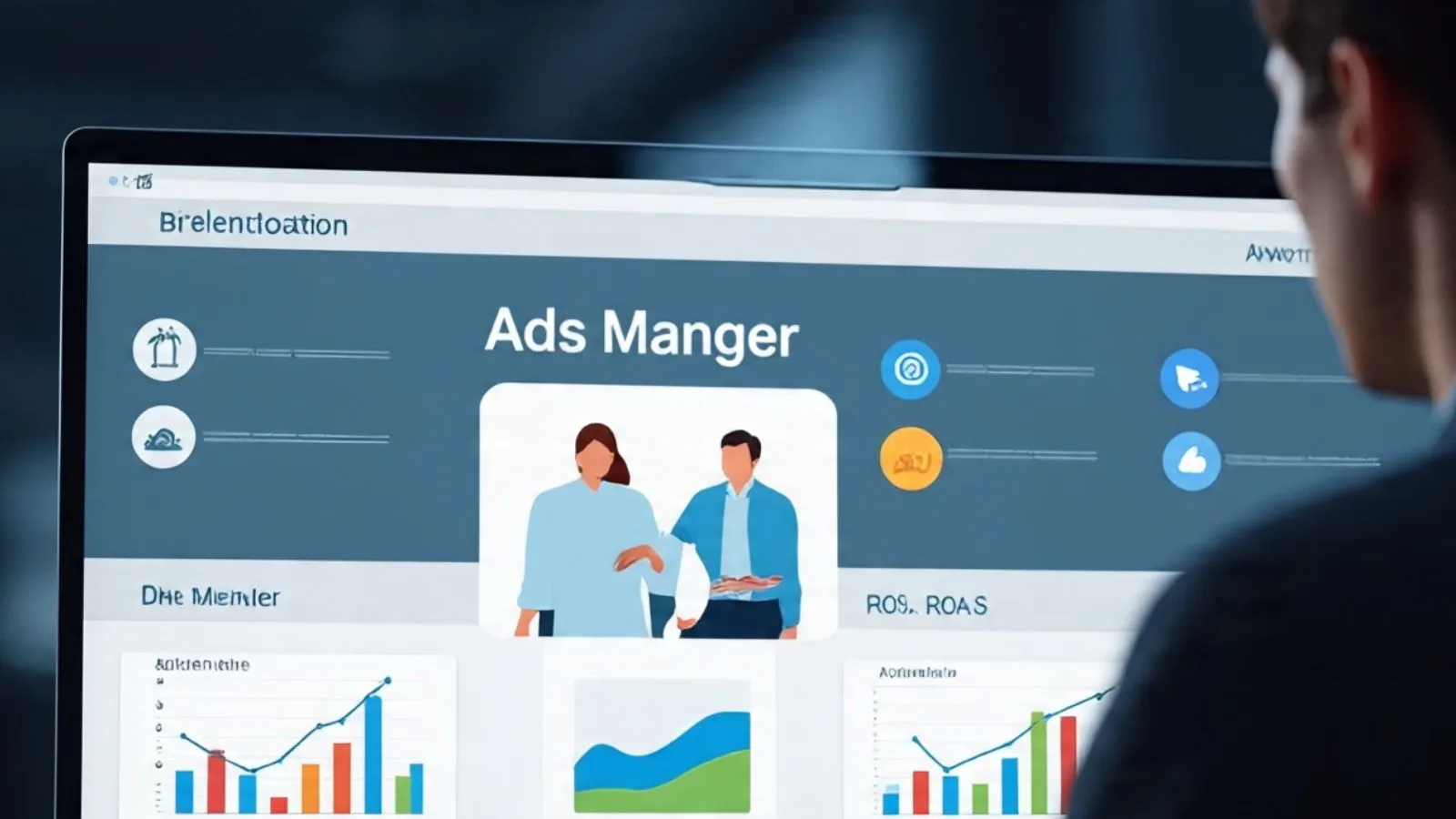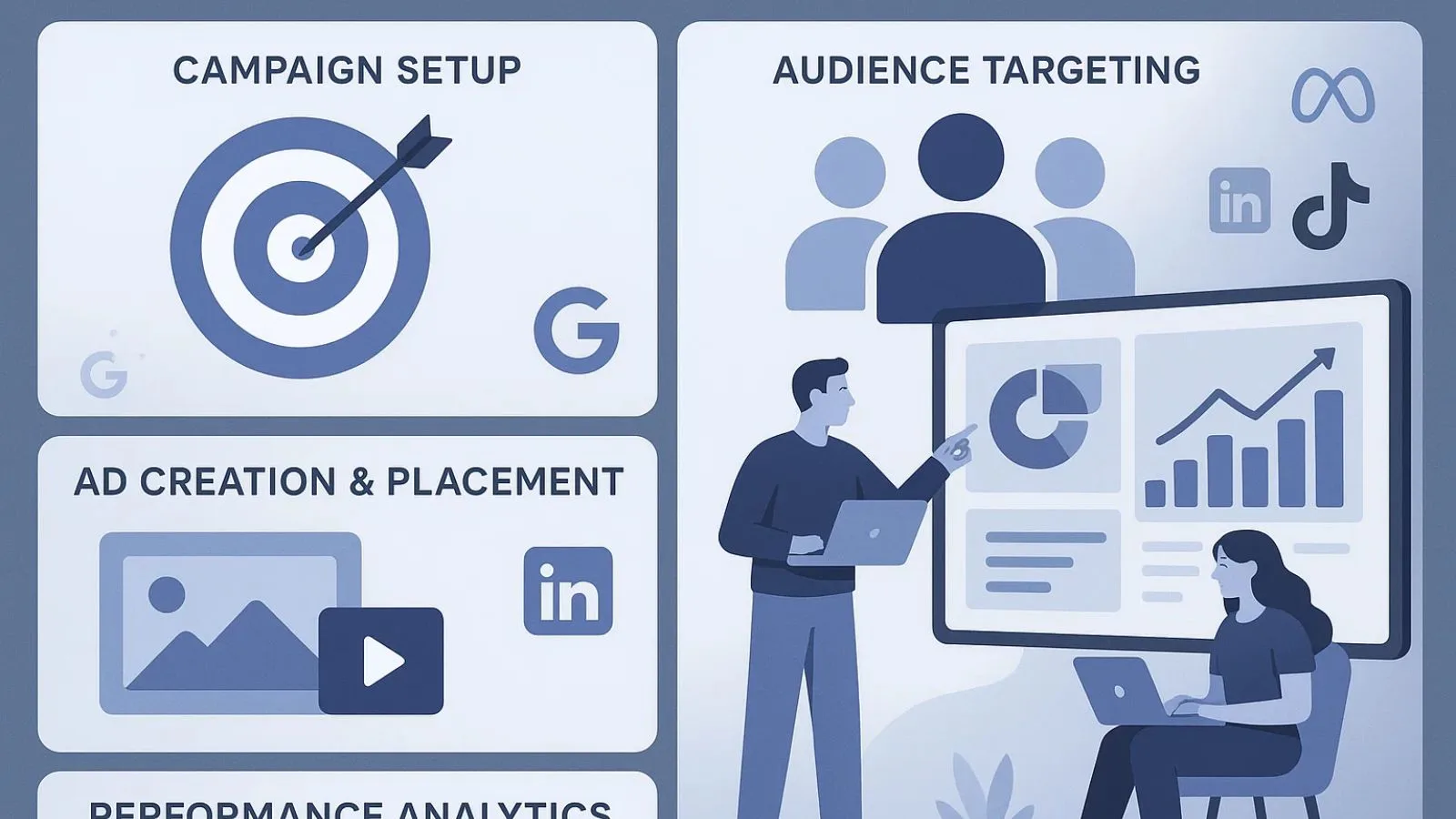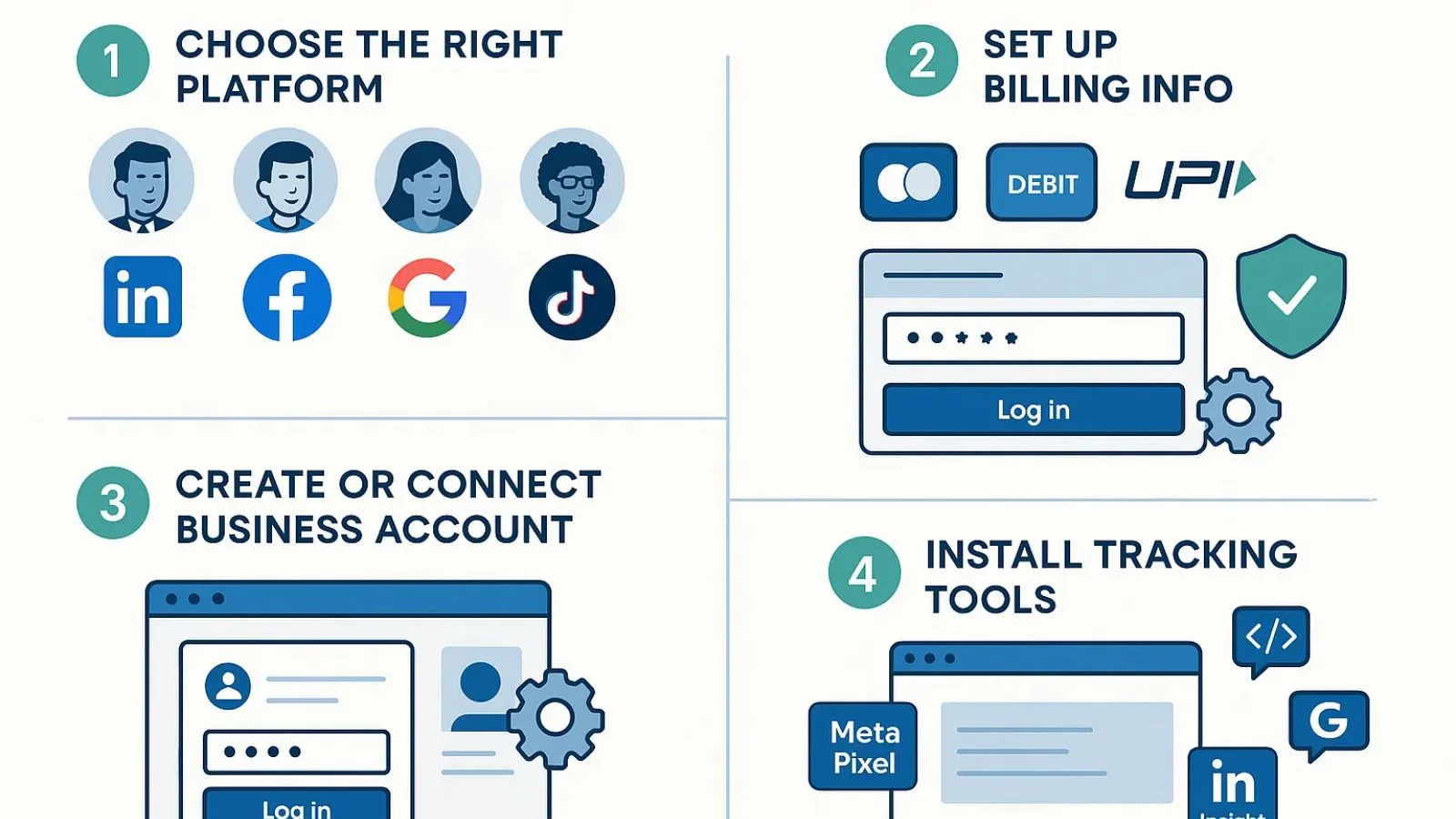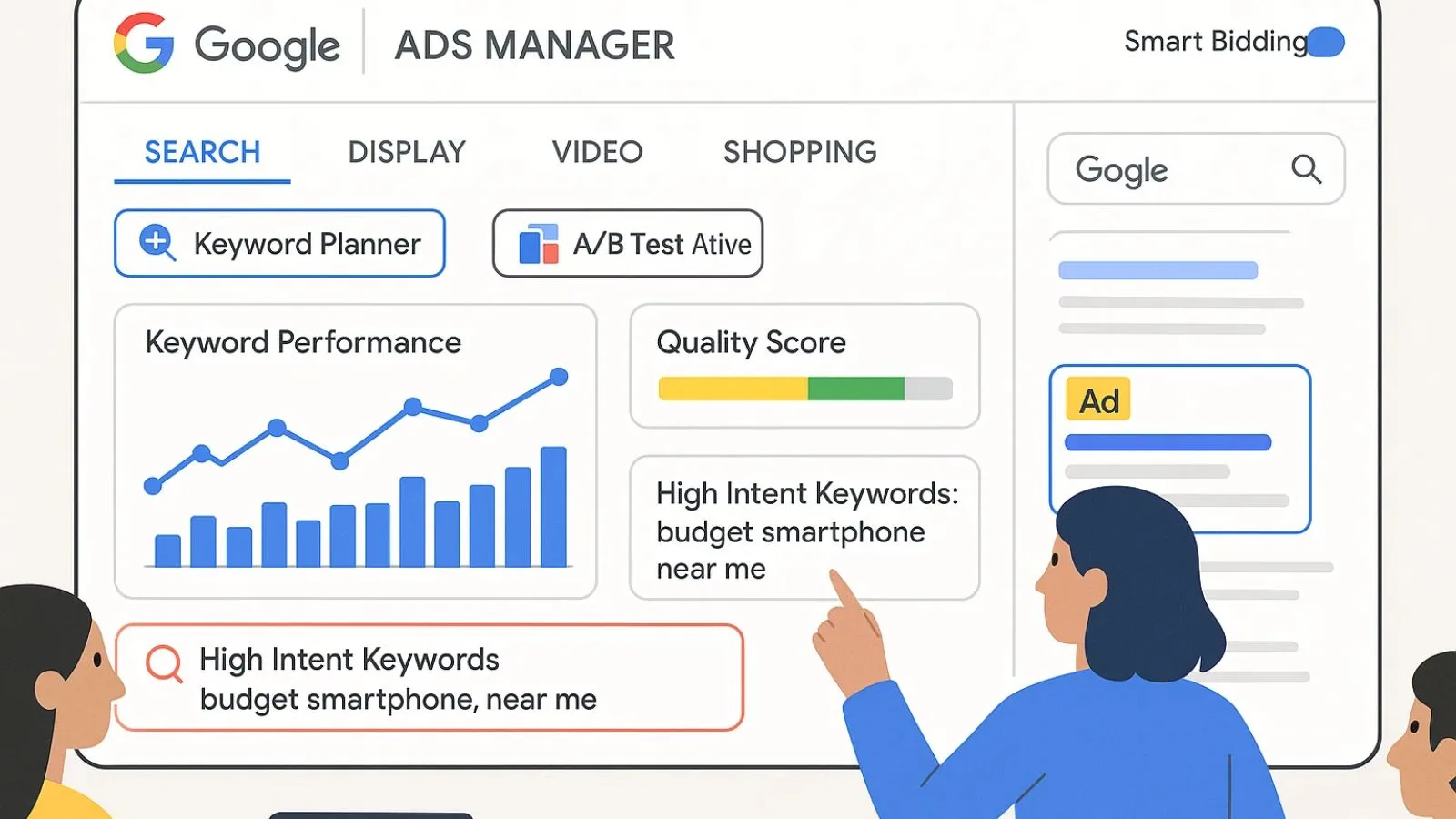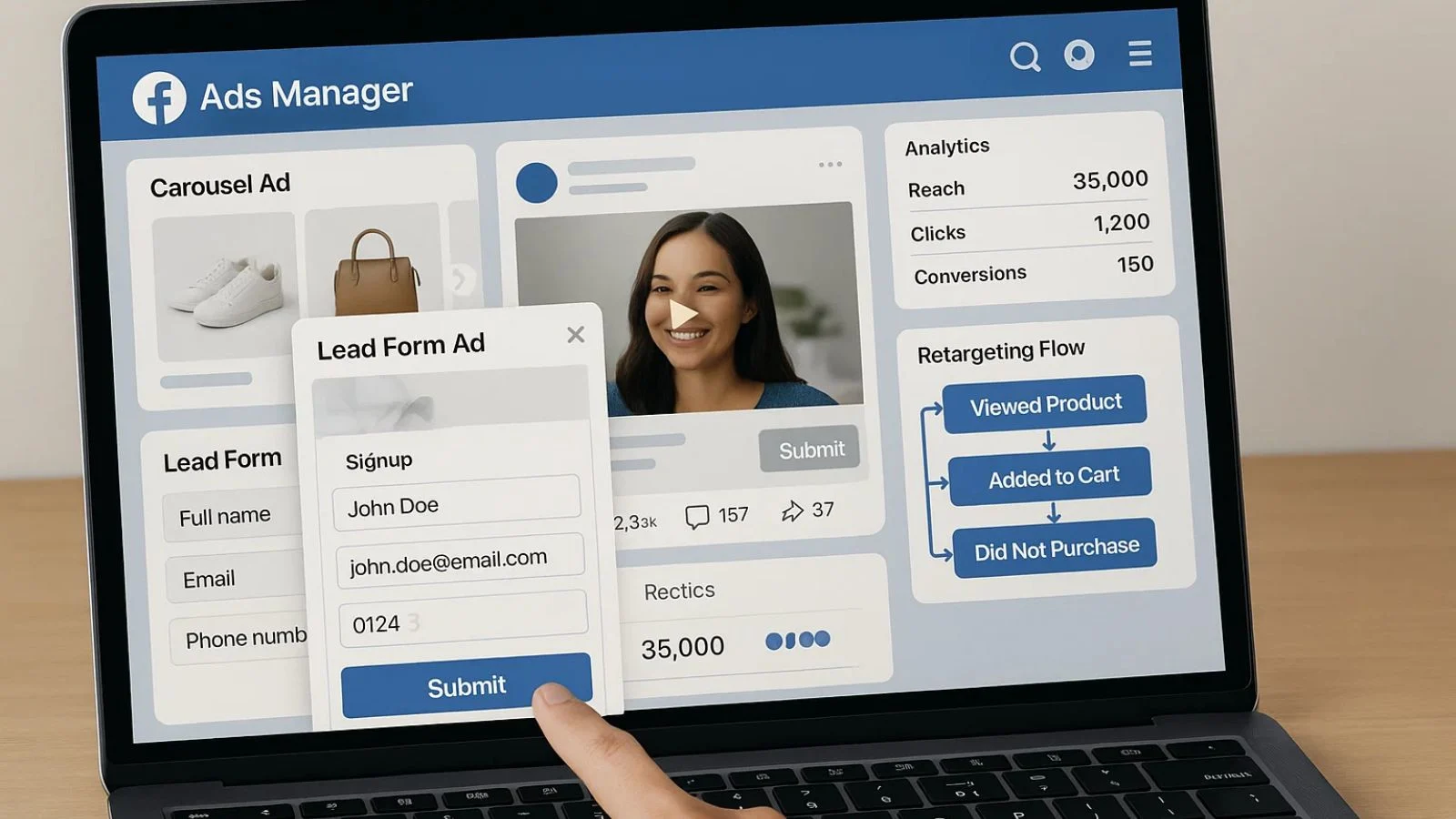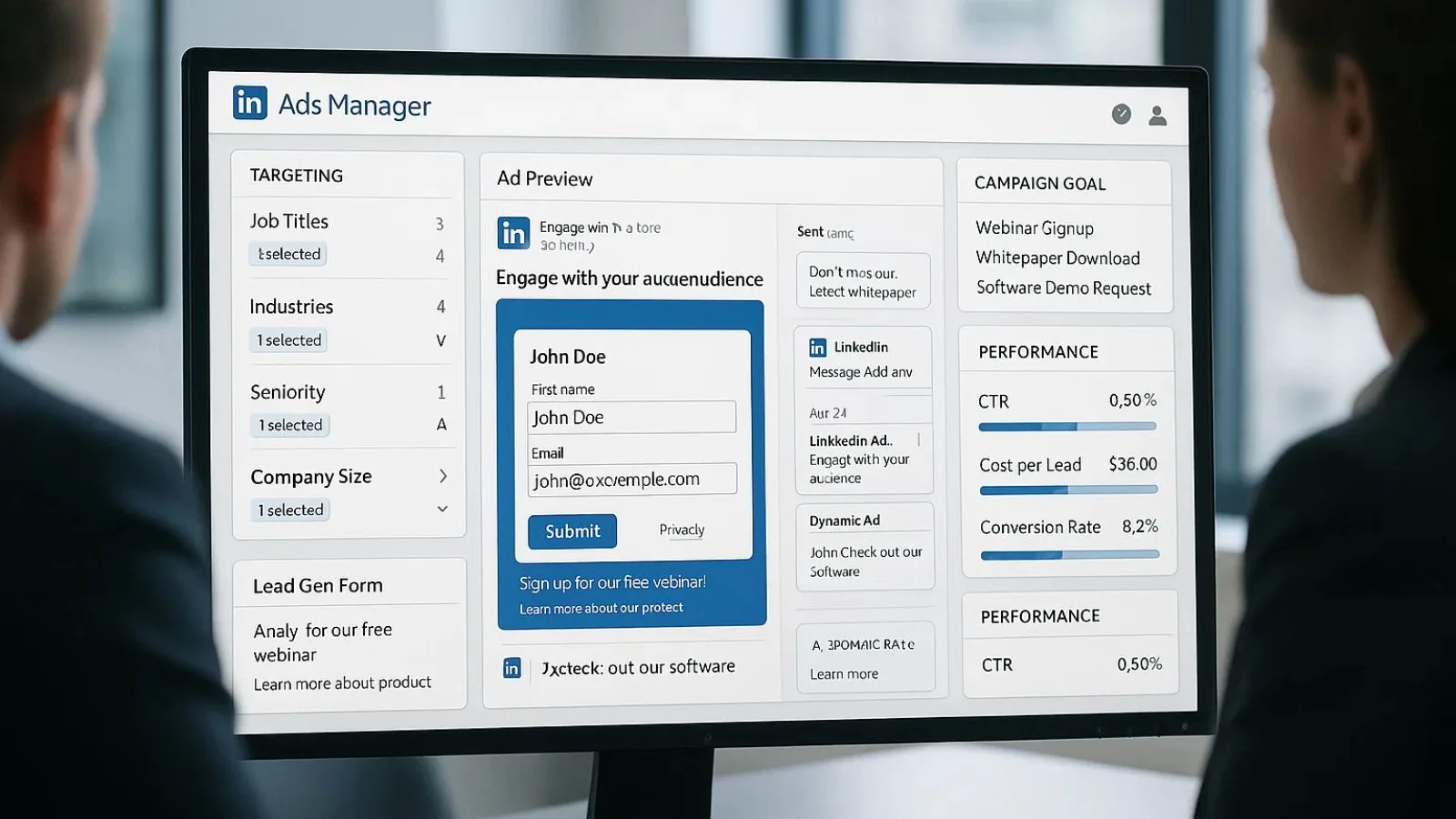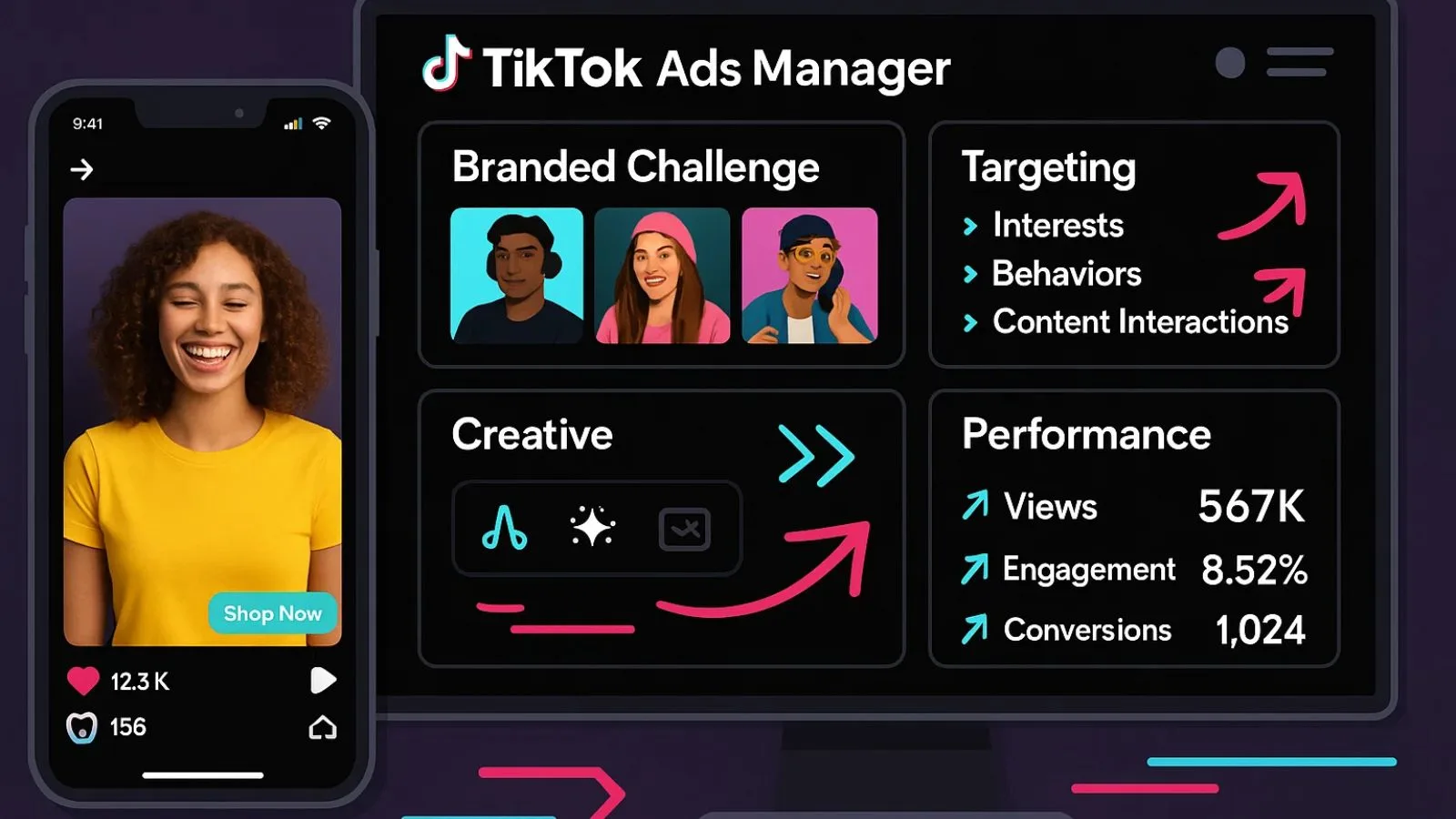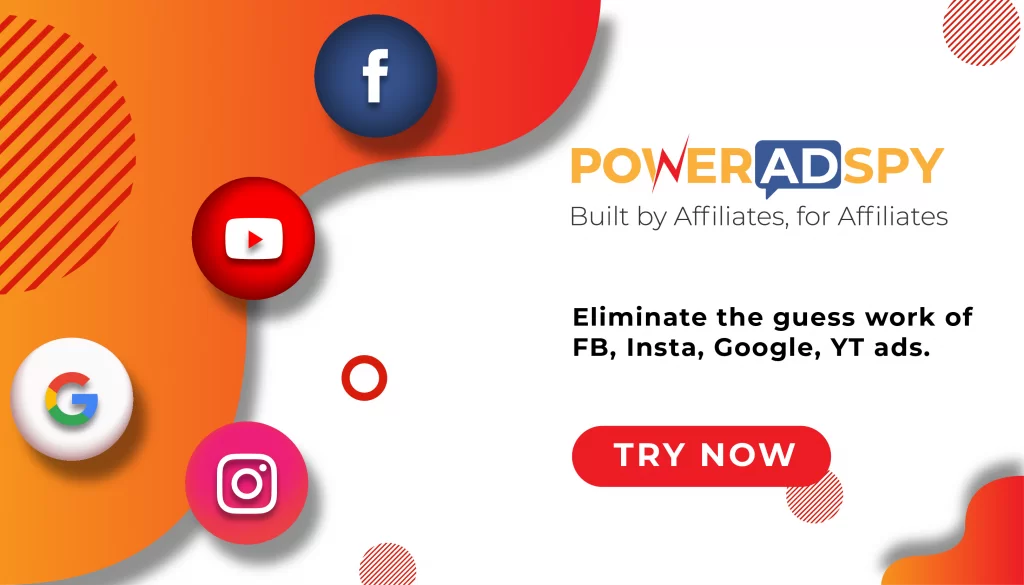How To Use Ads Manager To Boost Ad Performance?
If you’re running digital ads, learning how to use an ads manager effectively is a game-changer.
It’s more than just a dashboard; it’s where your campaigns are built, launched, tracked, and fine-tuned for better performance.
Whether you’re promoting a product, generating leads, or boosting brand awareness, Ad Manager gives you the tools to take control and make data-driven decisions.
At first glance, ad managers can feel a little intimidated.
But once you understand the basics, they open up a world of targeting options, budget controls, and performance insights that can seriously elevate your marketing game.
Almost every major platform, Google, Facebook, Meta, LinkedIn, and even TikTok, offers its version of an ad manager tailored to its audience.
In this blog, we’ll guide you through how to get started with an ad manager, how to navigate different platform-specific tools, and how to optimize your campaigns so they deliver results.
Whether you’re a beginner just testing the waters or someone looking to sharpen their strategy, you’ll find actionable tips to help you get more from every ad you run.
Let’s get into it and learn how to make As Manager work for you, not the other way around.
Listen Podcast Now!
What Is an Ads Manager and Why Use It?
An Ads Performance manager is a centralized tool that helps you create, manage, and track paid ad campaigns across various digital platforms, including Google, Facebook, Instagram, TikTok, and LinkedIn.
Whether you’re running a single ad or a full-scale campaign, Ad Manager gives you full control over everything, from targeting and budgeting to creative testing and performance tracking.
Instead of boosting random posts or guessing what might work, Ad Manager lets you set clear objectives for your ads, like increasing website traffic, generating leads, or driving sales.
It’s where you choose your audience, set your budget, upload your ad creatives, and monitor how everything performs in real time.
The real benefit?
Precision and performance. You can target the right people based on their age, interests, location, and behavior.
You can test multiple versions of your ads to see what works best.
And most importantly, you can measure results with detailed metrics like CTR (click-through rate), CPM (cost per thousand impressions), and ROAS (return on ad spend).
If you’re serious about scaling your business online, using an Ad Manager is no longer optional; it’s essential.
It saves time, minimizes ad spend waste, and helps you make smarter decisions with data.
Core Features Across All Ads Managers:
No matter which platform you choose, whether it’s Google, Meta, LinkedIn, or TikTok, the core features of an Ad Manager tool remain fairly consistent.
These shared features are designed to help advertisers run targeted, cost-effective, and performance-driven campaigns.
1. Campaign Setup:
Every Ad Manager begins with setting up a campaign.
You’ll choose a campaign objective (like traffic, engagement, conversions, or video views), set your daily or lifetime budget, and define your ad schedule.
2. Audience Targeting:
One of the biggest strengths of Ad Managers is precision targeting.
You can reach users based on demographics, interests, behaviors, job titles, locations, and even past interactions with your brand.
Some platforms also offer lookalike or custom audiences to expand reach intelligently.
3. Ad Creation and Placement:
Within Ad Manager, you can design your ad creatives, images, videos, headlines, CTAs, and more.
You also choose where your ads will appear (feeds, stories, search results, etc.), depending on the platform.
4. Performance Tracking and Analytics:
Ad Managers come with built-in tools to measure how your campaigns perform.
From click-through rates (CTR) and impressions to conversions and return on ad spend (ROAS), you get real-time insights to make smarter decisions.
In short, these core features are what make Ad Managers essential for marketers who want to scale their efforts and optimize every rupee spent.
How To Set Up An Ads Manager Account?
Before you can start running successful ad campaigns, the first step is to set up your Ad Manager account the right way. Here’s how you can do it, no matter which platform you’re using.
a. Choose the Right Platform:
Start by identifying where your audience spends the most time.
If you’re targeting professionals, LinkedIn might be your best bet. For visual content, Instagram and Facebook are ideal.
Google is great for search intent, while TikTok works well for younger, mobile-first users.
b. Create or Connect Your Business Account:
Most platforms require a business account to access Ad Manager features.
On Meta, for example, you’ll need a Business Manager account to link your Facebook Page and Instagram profile.
Google Ads and LinkedIn follow similar steps, requiring verified domains and billing info.
c. Set Up Payment and Billing Info:
Enter your preferred payment method: credit card, debit card, or UPI (where supported). This ensures your campaigns run without interruption.
d. Install Tracking Tools:
For accurate performance tracking, install the right tracking codes, like Meta Pixel, Google Tag, or LinkedIn Insight Tag, on your website.
These tools help you understand user behavior and improve future ad performance.
Google Ads Manager:
When it comes to online advertising, Google Ads Manager is one of the most powerful tools available.
It helps businesses reach potential customers right when they’re searching for products or services.
Unlike social platforms, Google targets users with high intent, making your campaigns more likely to convert.
Getting started with Google Ads Manager means choosing the right campaign type: Search, Display, Video, or Shopping.
Most businesses begin with Search Ads, which show up at the top of Google search results based on targeted keywords.
The key to success is understanding keyword intent. You want to focus on keywords that show buying signals, like “best budget smartphone” or “digital marketing agency near me.”
Use Google’s Keyword Planner to research terms with high relevance and manageable competition.
Another essential feature is Smart Bidding, Google’s AI-based bidding strategy that optimizes for conversions or ROAS (return on ad spend).
This takes a lot of the guesswork out of manual bidding.
Don’t forget to keep your Quality Score high. This depends on how relevant your ad is to the keyword, the quality of your landing page, and the expected click-through rate.
A higher score can lower your costs per click and improve your ad rank.
Lastly, always test multiple ad versions. Run A/B tests with different headlines and descriptions to find what resonates best with your audience.
By learning how to leverage Google Ads Manager effectively, you can generate high-quality leads and improve campaign performance over time.
Meta Ads Manager:
Meta Ads Manager is a unified platform that lets you run, manage, and optimize ads across Facebook and Instagram.
Whether you’re promoting a product, generating leads, or boosting engagement, this tool gives you full control over your campaigns.
You can create custom audiences, set up lookalike targeting, and experiment with different placements like Stories, Reels, or Feeds.
One of the best features of Meta Ads Manager is its ability to break down performance in real time, so you can quickly see what’s working and adjust your strategy.
It also supports A/B testing, making it easier to test headlines, visuals, and CTAs to improve your results.
If you’re serious about social media advertising, mastering Meta Ads Manager is key to getting the most out of your ad budget and scaling your campaigns effectively.
FB Ads Manager:
FB Ads Manager is your command center for running high-performing Facebook Ad Tools.
It allows you to create, manage, and optimize ads with precision, from choosing campaign objectives to targeting specific audience segments.
Whether you’re promoting a product, collecting leads, or increasing engagement, FB Ads Manager gives you full control over every aspect of your ad strategy.
One of its standout features is the ability to use carousel ads, video ads, and lead forms that drive action directly within the platform.
You can track real-time performance metrics like reach, clicks, and conversions to understand what’s working and make quick adjustments.
Plus, the retargeting tools help you reconnect with users who’ve shown interest but haven’t converted yet.
If you’re serious about growing your brand on Facebook, learning to use FB Ads Manager effectively is a must.
LinkedIn Ads Manager:
If your target audience includes professionals, decision-makers, or B2B clients, LinkedIn Ads Manager is your best bet.
It allows you to run highly targeted campaigns based on job titles, industries, seniority, company size, and more, making it ideal for B2B lead generation.
You can choose from various ad formats like Sponsored Content, Message Ads, and Dynamic Ads to connect with your audience in a more personal way.
One of its most powerful features is the built-in Lead Gen Forms, which help capture user information directly within the platform, reducing drop-off rates.
Whether you’re promoting a whitepaper, webinar, or software product, LinkedIn Ads Manager gives you the tools to reach the right people, at the right time, in a professional context.
TikTok Ads Manager:
TikTok Ads Manager is designed for brands that want to reach highly engaged, trend-savvy audiences.
With its creative-first approach, the platform focuses on short, attention-grabbing videos that feel organic rather than overly promotional.
You can target users based on demographics, interests, behaviors, and even interactions with specific content.
To boost performance, keep your creatives aligned with current trends, use catchy audio, quick cuts, and clear calls to action.
Branded challenges and in-feed ads work particularly well to drive engagement and conversions.
Whether you’re promoting an app, product, or service, TikTok Ads Manager allows you to test, analyze, and scale your campaigns with ease.
Just remember: authenticity is key.
Ads that blend into the user experience tend to perform best.
Also Read:
Understand Your Ads Performance With New Version Of Reporting Tools
9 Facebook Ad Tools To Save Your Time And Money
PowerAdSpy: The Secret Weapon:
PowerAdSpy is a powerful ad intelligence tool that helps you see exactly what’s working for your competitors.
Whether you’re running campaigns on Facebook, Instagram, Google, TikTok, or even YouTube, this tool gives you a behind-the-scenes look at high-performing ads across multiple platforms.
Here’s how PowerAdSpy empowers your ad strategy:
- Advanced Filters – Narrow down ads by niche, keywords, advertiser, call-to-action, and engagement metrics like likes, comments, and shares.
- Competitor Monitoring – Track what your competitors are running, how long their ads are active, and which creatives are driving results.
- Ad Insights – Access detailed analytics on ad performance, audience engagement, and targeting methods used.
- Cross-Platform Search – Discover winning campaigns across multiple platforms, all from a single dashboard.
- Creative Inspiration – Explore proven headlines, ad copies, and visuals to craft campaigns that convert.
How to Discover Ads with PowerAdSpy:
- Log in and select your preferred ad platform (e.g., Facebook or TikTok).
- Enter your target keywords, niche, or competitor’s name in the search bar.
- Apply filters like country, ad type, CTA, or engagement level.
- Browse through the live ads to analyze what’s performing best.
- Save and bookmark the ads you find most relevant for your campaigns.
Instead of wasting time and budget on trial and error, you can use PowerAdSpy to identify what visuals, headlines, and targeting methods are already converting well in your industry.
Think of it as your ad research assistant, available 24/7.
If you’re serious about making your Ads Manager strategy more effective, PowerAdSpy is the competitive edge you need.
Use it to plan smarter, test faster, and scale quicker. Ready to level up your ad game? PowerAdSpy has your back.
Conclusion:
Mastering Ads Manager isn’t just about setting up campaigns; it’s about understanding your audience, optimizing your strategy, and using data to drive results.
Whether you’re running ads on Facebook, Google, TikTok, LinkedIn, or Meta platforms, knowing how to use each Ads Manager effectively can significantly boost your ad performance and return on investment.
By avoiding common mistakes, regularly monitoring your metrics, and testing what works, you can make your ad strategy smarter and more impactful.
And if you ever need inspiration or insights into what’s already working for your competitors, tools like PowerAdSpy can give you that extra edge.
Take your time to explore, experiment, and improve, because great ads don’t just happen; they’re managed with purpose.
FAQ’s:
Q1. Is Ads Manager free to use?
Yes, most platforms like Meta, Google, and LinkedIn offer Ads Manager tools for free. You only pay for the ads you run, not for using the manager itself.
Q2. What’s the difference between boosting a post and using Ads Manager?
Boosting a post is quick and simple but offers limited targeting.
Ads Manager gives you full control over audience, budget, placements, and performance tracking, ideal for serious advertisers.
Q3. Can I manage ads for different platforms from one place?
Some third-party tools allow cross-platform management, but typically, each platform (like Meta, Google, or TikTok) has its own Ads Manager.
Q4. How long does it take to see ad performance results?
It depends on your objective and platform. Some campaigns show results in a few hours, while others (like lead generation) might take a few days.
Always give it at least 48–72 hours before making major changes.
Q5. Is Ads Manager suitable for small businesses?
Absolutely! Whether you’re a solopreneur or a growing brand, Ads Manager lets you run targeted campaigns even with a small budget.

